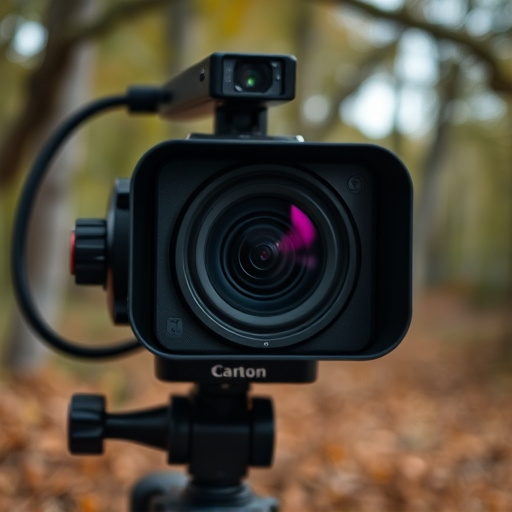Nanny cams disguised as everyday items like smoke detectors provide discreet surveillance for homeowners, aiding in child/elderly care and property security against burglars. However, their hidden nature raises ethical concerns if installed without consent. Legal and ethical issues surround their use in rental properties, with many jurisdictions prohibiting cameras without all occupants' agreement. To protect privacy, tenants should be vigilant, inspecting spaces for suspicious devices and using detection tools like infrared thermals or UV lights.
Uncover the hidden world of surveillance with our guide to nanny cams—disguised devices that have become a common concern in rental properties. These tiny cameras, often concealed as everyday household items, raise important legal and ethical questions. Learn about the most common disguises for these secret watchers and discover strategies to prevent and detect them in your rented space. Understand the implications and protect your privacy.
- Understanding Nanny Cams: A Disguised Surveillance Tool
- Common Disguise Locations for Nanny Cameras in Rentals
- Legal Considerations and Ethical Dilemmas
- Preventing and Detecting Hidden Cameras in Your Rental Space
Understanding Nanny Cams: A Disguised Surveillance Tool
Nanny cams, also known as hidden cameras, are a discreet surveillance tool that has gained popularity due to their ability to blend in with everyday household items. These tiny devices can be disguised as common objects like smoke detectors, light switches, or even artificial plants, making them an attractive option for homeowners concerned about security and privacy. With modern technology, these nanny cams offer high-definition video quality, motion detection, and remote access via smartphone apps, allowing users to monitor their properties from anywhere at any time.
While they are often used to keep an eye on children or elderly relatives, nanny cams can also be employed for property protection against burglars or intruders. The fact that these cameras are hidden adds a layer of discretion, making it difficult for potential criminals to anticipate surveillance. This technology raises ethical considerations and privacy concerns, especially when installed without the knowledge of tenants or residents, emphasizing the importance of transparency and consent in using such devices.
Common Disguise Locations for Nanny Cameras in Rentals
In the quest for covert surveillance, nanny cameras often find creative and discreet hiding spots within rental properties. One of the most common disguises is to incorporate them into everyday household items that are commonly found in homes. For instance, a small camera disguised as a smoke detector or a fire alarm can go unnoticed while capturing footage. Similarly, these hidden devices can be concealed within seemingly innocent objects like clock radios, light switches, or even decorative figurines.
Other clever disguises include mimicking the look of electrical outlets, AC units, or everyday kitchen appliances. These nanny cam setups allow for unobtrusive monitoring, making it easier to capture intimate moments without raising suspicion. The use of such devices raises ethical considerations, emphasizing the importance of transparency and consent in rental relationships.
Legal Considerations and Ethical Dilemmas
While installing hidden cameras, or nanny cams disguised as household items, might seem like a viable solution for homeowners seeking peace of mind, it’s crucial to navigate legal and ethical considerations. The use of surveillance technology in rental properties is a complex issue, with varying regulations across jurisdictions. In many places, it’s illegal to install cameras without the explicit consent of all occupants, which can be especially tricky when dealing with tenants.
Moreover, even where laws permit hidden cameras, ethical dilemmas arise. Tenants have a reasonable expectation of privacy in their homes, and constant surveillance can foster an atmosphere of distrust. It’s essential for homeowners to strike a balance between safety concerns and the right to privacy, ensuring that any use of technology respects legal boundaries and upholds ethical standards.
Preventing and Detecting Hidden Cameras in Your Rental Space
Preventing and detecting hidden cameras in your rental space is an essential step to ensure privacy and security. Landlords or property managers might employ various methods, such as Nanny Cam Disguised as Household Items, to monitor properties. Being vigilant and proactive can help you safeguard your personal spaces. Regularly inspect common areas like kitchen cabinets, behind mirrors, and under furniture for any suspicious devices. These hidden cameras often take the form of everyday items like smoke detectors, light switches, or even fake fire alarms.
To enhance detection, utilize specialized tools designed to identify hidden camera activity. Some advanced options include infrared thermals and UV lights that can reveal heat signatures or reflected light patterns indicative of surveillance equipment. By staying informed about these tactics and taking preventive measures, tenants can better protect their privacy and create a safer living environment.
In the era of advanced technology, understanding hidden surveillance spots in rental properties is crucial for tenants and landlords alike. The article has explored the insidious world of nanny cams, their common disguises like everyday household items, and the legal gray areas they navigate. By being vigilant and adopting preventive measures, residents can safeguard their privacy while ensuring a secure living environment. Staying informed about these potential intrusions is essential to protect against unauthorized surveillance in our own homes.
